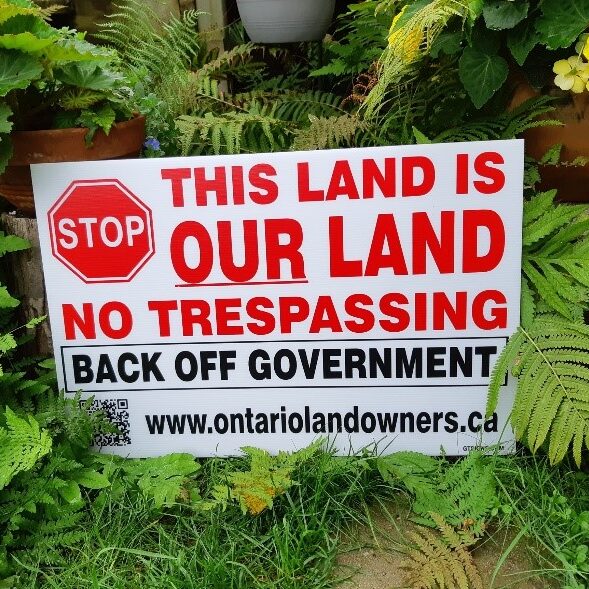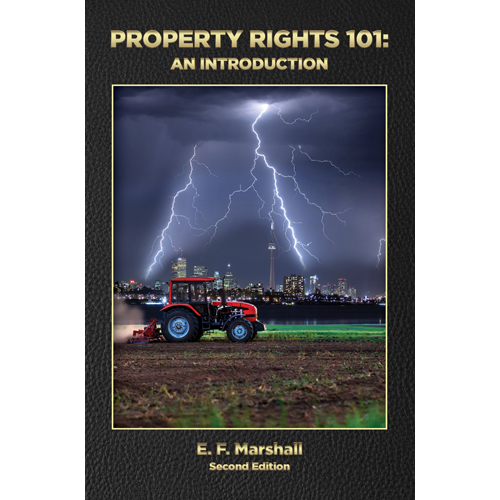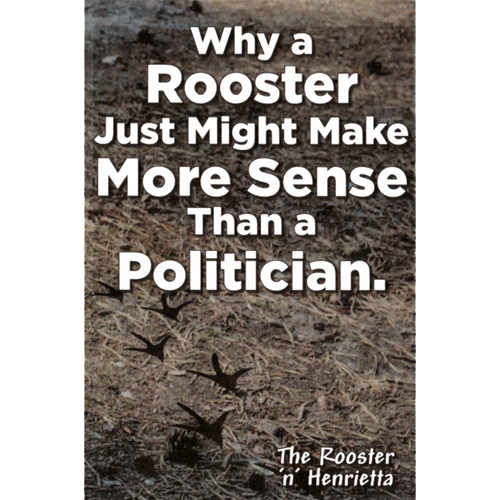Where should we build our Cities? by John Robson
- 2016-10-01
- By admin
- Posted in Latest News
In the last Landowner Tom Black spoke in “Rural Reflections” of his puzzlement and pain at watching prime farmland converted to suburban houses and stores. And if you’re wondering what we’re thinking in letting it happen, the short answer is, we’re not.
Tom says, “Never a thought is given to the fact that this land will not provide food ever again for people of this city, this province, the country or the starving in the world”. No indeed. Nor is much thought given to what sort of world we will live in even if scientific progress somehow allows us to feed ourselves without growing food in nasty smelly dirty dirt. Perhaps one day meat-like things may roll in great slabs from factories; we may harvest fish, and plankton, and sea greens and protein from the sea. But what sort of life will it be?
Tom commented sourly “I guess this is what is called ‘progress’”. Which does account for a peculiar blindness to the process, across most of the political spectrum.
Far too many self-described “conservatives” are at heart progressives who delight at seeing man mastering nature and pushing GDP to ever-greater heights of hollow vulgarity. And far too many self-described “progressives” on the left are scornful of small-town and rural Ontario and Canada, with its supposedly backward values, its attachment to God and guns as Barack Obama memorably sneered in an American context.
Such leftists genuinely cherish “the environment”, enjoy going to the cottage and panic at “global warming”. But they do not really think it is possible to live anywhere other than big gleaming cities full of urban sophisticates and “creatives” while vacationing in the deep woods. And even those who notice and grieve at what Tom describes are not comfortable with a situation in between where people live and work among and with natural things and exercise stewardship over nature. Their idea of farming is an organic rooftop garden.
The result is that almost nobody talks much about “how we should we live” including in the rather literal sense of where and how we should seek shelter and warmth. Tom does ask why with all our fancy modern technology including “Computers and high speed fiber and satellite communications networks” we cannot establish communities “on the rocky poor quality land that makes up the majority of the Ontario landscape”. And I’d like to raise a larger question.
Why do we give so little thought to how, as well as where, we design our cities and homes wherever we put them? Some years back I happened across a marvelously eccentric mid-1970s book A Pattern Language: Towns Buildings Construction. Among many other things its six authors suggested coping with encroachment on farmland by permitting urban development only on higher less fertile ground while preserving farms in the rich stream and river valley soil in a kind of “finger” pattern.
Crucially, they were concerned not just with preserving farm production for urban dwellers. They wanted to keep city folk, especially modern children, in touch with the fundamental, wholesome reality of getting food from plants and animals in a harmonious relationship with nature.
Too many kids today would choke and flee from the smell of a farm. Yet they find nothing odd or offensive in “first person shooter” digital games. And it matters. According to the author of a British book Living for the City about a decade ago, “Post-operative patients who have a view of trees rather than blank walls recover faster and need fewer drugs than those who do not.
Plants measurably reduce the anxiety felt by hospital patients. Prisoners who can see the countryside from their cells suffer less illness. ‘Green time’ relieves the symptoms of hyperactive children.” More recently, the Washington Post reported an experiment at an Oregon prison’s isolation unit in which even videos of oceans, forests, mountains and clouds dramatically improved the conduct of violent criminals.
The Post noted that prisons are about the most artificial environments imaginable, with their poured concrete, artificial lights and metal. But what about modern schools, or cities generally? (If you ever watch a hip fashion show on TV, count the plants. Right. None.) As the Buddhists say, to know and not to do is not truly to know. And we build and build, across the spectrum, as though we did not know.
The authors of A Pattern Language would in conventional terms seem to have little in common with a reactionary like myself.
Yet I share their hostility to zoning restrictions that deprive cities of organic, vital “mixed use”. In older cities and small towns people live, work and play in the same neighbourhoods and, crucially, children see the whole range of normal human activity and interaction instead of the sterile, artificial separation that characterizes modern life especially in the suburbs. (For similar reasons, the authors want to relax rules about house size to permit the young and very old to live in tiny houses of the sort that are in fact now popping up in a curious subculture but always on wheels because of zoning laws.)
I’m not saying you should run out and buy the book especially as it cost me over $100 more than a decade ago. But I am saying we should think and talk more not just about why we pave rich fertile land, but about the dismal architectural style of the cheap throwaway suburban houses and stores we then erect, with the opposite effect on the human soul to a comfortable old brick house, let alone a cathedral, castle, or farm.
I would even say that one reason conservatives are doing so poorly in politics is that we seem to have nothing to say about culture that is not surly. In the process, we seem to be losing arguments to people who themselves have nothing to say that is not shallow.
What is our vision of the good life? Where does it end? Do we dream of an utterly urban planet, paved, gleaming and artificial? Or of vast sleek cities connected by high-speed bullet trains to “unspoiled” wilderness? Or do we have no such vision at all?
Social conservatism must offer something beyond objecting to radical sexual education even if it matters to do so. We need to offer a satisfying vision of human existence, not merely of piling up wealth in vulgar and destructive ways.
We should be proud environmentalists who defend the family farm as a way of life not just a source of wealth, and call tacky suburban homes and shopping centres the progressive affront to decency that indeed they are.
Search:
Categories
Archives
- April 2024
- January 2024
- December 2023
- November 2023
- August 2023
- July 2023
- June 2023
- May 2023
- April 2023
- March 2023
- February 2023
- January 2023
- December 2022
- November 2022
- October 2022
- September 2022
- August 2022
- July 2022
- June 2022
- May 2022
- April 2022
- March 2022
- February 2022
- January 2022
- December 2021
- November 2021
- October 2021
- September 2021
- August 2021
- July 2021
- June 2021
- May 2021
- April 2021
- March 2021
- February 2021
- January 2021
- December 2020
- November 2020
- October 2020
- September 2020
- August 2020
- July 2020
- June 2020
- May 2020
- April 2020
- March 2020
- February 2020
- January 2020
- December 2019
- November 2019
- October 2019
- September 2019
- August 2019
- July 2019
- June 2019
- May 2019
- April 2019
- March 2019
- February 2019
- January 2019
- December 2018
- November 2018
- October 2018
- September 2018
- August 2018
- July 2018
- June 2018
- May 2018
- April 2018
- March 2018
- February 2018
- January 2018
- December 2017
- November 2017
- October 2017
- September 2017
- August 2017
- July 2017
- June 2017
- May 2017
- April 2017
- March 2017
- February 2017
- January 2017
- December 2016
- November 2016
- October 2016
- September 2016
- August 2016
- July 2016
- June 2016
- May 2016
- April 2016
- March 2016
- February 2016
- January 2016
- December 2015
- November 2015
- October 2015
- September 2015
- August 2015
- July 2015
- June 2015
- May 2015
- April 2015
- March 2015
- February 2015
- January 2015
- December 2014
- November 2014
- October 2014
- September 2014
- August 2014
- July 2014
- June 2014
- May 2014
- April 2014
- March 2014
- February 2014
- January 2014
- December 2013
- November 2013
- October 2013
- September 2013
- August 2013
- June 2013
- April 2013
- October 2012
- May 2012
- September 2011



